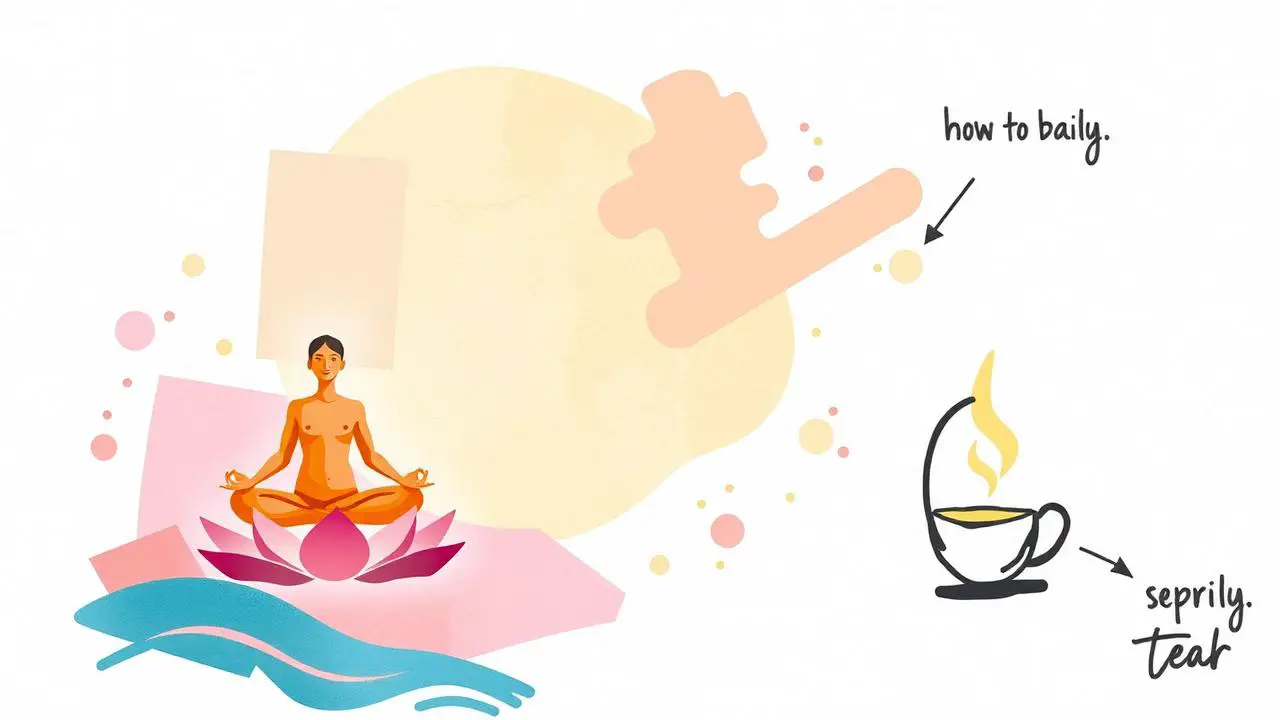In recent years, there has been a general increase in discussion around mindfulness practice and the benefits it brings to daily life. Just as we should make physical exercise part of our daily routine, we should also look after our mind. So what are the 3 steps of mindfulness?
The three steps of mindfulness are awareness, acceptance and commitment. Awareness means being aware of our thoughts, feelings, sensations, and emotions. Acceptance means accepting these things without judgment. Commitment involves acting to make a change
These steps are designed to help you overcome life difficulties and to handle everyday life situations.
What is Mindfulness?
Mindfulness is the practice of being present in the moment. It’s an effective way to cope with stress, anxiety, depression, and other mental health issues.
This practice is not something that you learn overnight; it takes time and practice. You have to put in the effort to get the results you want.
It’s a simple concept but can be hard to put into practice. It’s not easy to be mindful all day, every day. The goal is to become more aware of yourself and your actions. You do this by practising and developing the habit of being in the present moment.
In this post, I’ll share some tips and tricks on how to get started with mindfulness.
Three Steps of Mindfulness
Step 1: Awareness.
Awareness is the first step in mindfulness. The goal of awareness is to become aware of your thoughts and emotions.
You need to be conscious of what is going on around you.
You need to be mindful of your surroundings.
You will notice that your mind will wander off, and you will need to bring it back to the present.
When you are aware of your surroundings, you will be able to see what is happening around you. You will also be able to notice your emotions and your thoughts.
This will help you to control your emotions and your thoughts.
Step 2: Acceptance.
Acceptance is the second step of mindfulness. You have to accept what is happening right now.
When you are aware of your surroundings and your emotions, you will be able to accept them.
You have to accept that things are not perfect, but you have to be okay with them.
You have to accept yourself as you are.
Step 3: Commitment.
Commitment is the third step of mindfulness. It is the action step.
You need to commit to doing things differently in your life.
You need to change your mindset.
You need to make changes in your life.
When you are committed to something, you will be more focused on it.
You will be more aware of what you are doing and what is going on around you. You will be able to improve your life by being mindful.
How to start Practicing Mindfulness
Mindfulness is a practice that has been gaining popularity as people realize how beneficial it can be for improving our lives. It’s been proven to reduce stress and anxiety, help us cope with difficult situations, improve our relationships and even help us become happier. But how exactly do you start to use it?
Start by sitting quietly and comfortably: Sit comfortably and quietly in a place where you won’t be disturbed. Try not to move around or do anything that will distract you.
Notice your thoughts: Notice your thoughts without judgment. Notice the thoughts that run through your mind. Notice the thoughts that you don’t like. Notice the thoughts that you like. Notice the thoughts that you think are important and the ones that you think aren’t important.
Notice your emotions: Notice your emotions without judgment. Notice the emotions that you don’t like. Notice the emotions that you like. Notice the emotions that you think are important and the ones that you think aren’t important.
Notice your body: Notice where you feel pain, tension, or stress. Notice how your body feels when you are happy, sad, angry, or excited.
Shift your focus: Focus on something else besides your thoughts, emotions, and physical sensations. Focus on the sounds of nature around you, imagine the animals making the noises. Listen to the cars, planes, trains travelling nearby, imagine travelling on them and look out of the window, what do you see? The aim is to think about something else.
What are the benefits of mindfulness?
Mindfulness allows you to be more aware of what is happening around you. When you are mindful, you are able to notice when things are out of place and when you are feeling stressed. You are also able to notice when you are in a state of flow.
It is defined as paying attention to what is happening right here and right now. It means noticing thoughts and feelings without judging them.
Here are 10 benefits of mindfulness:
1. Stress Relief
When you’re stressed out, you may feel anxious, angry, frustrated, sad, guilty, or depressed.
Stress affects every part of your life. If you don’t deal with stress effectively, it can lead to physical problems such as headaches, backaches, stomach aches, insomnia, and anxiety.
Mindfulness helps you manage stress better. Studies show that practicing mindfulness reduces stress levels and improves overall mood.
2. Improved Focus
When you’re mindful, you pay attention to what is going on in the present moment. This allows you to focus on one thing at a time.
This is helpful when you’re trying to complete a task or study for school. It also helps you concentrate on tasks that require concentration, such as playing sports or working on a project.
3. Better Health
Research shows that practising mindfulness can help you live longer and healthier.
Studies suggest that people who practice mindfulness regularly have fewer medical conditions than those who do not.
For example, research shows that people who meditate have lower rates of hypertension, diabetes, depression, and anxiety. They also tend to eat healthier foods and exercise more often.
4. Increased Happiness
A recent study found that people who practised mindfulness were happier than those who did not.
The researchers believe this is due to the fact that mindfulness helps you become aware of negative emotions and learn to cope with them.
5. Lower Rates of Depression
People who practice mindfulness are less likely to suffer from clinical depression.
In addition, they experience less severe symptoms of depression.
6. Improved Relationships
Mindfulness helps you develop greater empathy and compassion toward others.
This makes it easier to communicate with others and build stronger relationships.
7. Improved Concentration
When you’re mindful you notice things about yourself and your surroundings.
This helps you stay focused on the task at hand.
8. Improved Sleep
Mindfulness helps you fall asleep faster and sleep soundly.
9. Reduced Pain
Mindfulness helps you control pain.
Studies show that people who practice mindfulness report feeling less pain after surgery.
They also use less medication during recovery.
10. Greater Self-Esteem
Mindfulness helps you accept yourself as you are.
This gives you a sense of self-worth and pride.
Can Mindfulness Practices Really Improve Overall Happiness in Life and Relationships?
Practicing mindfulness can significantly improve your relationship with mindfulness. By being present in the moment and cultivating self-awareness, individuals can better understand their emotions and reactions, leading to healthier interactions with loved ones. This increased understanding can contribute to overall happiness in life and relationships.
Mindfulness in Everyday Life
Mindfulness is good for everyday life. You can use mindfulness to deal with your stress, anxiety, depression, and other mental health issues.
You can use mindfulness to deal with your thoughts and emotions.
You can use mindfulness to improve your relationships with others.
Mindfulness can help you to cope with the things that are happening in your life. It can help you to stay focused and in the moment.
You can use mindfulness to improve your life.
Sources
https://www.sciencedirect.com/science/article/abs/pii/S0304395907002436
https://www.sciencedirect.com/science/article/pii/S0005796709000333
https://link.springer.com/article/10.1007/s10902-017-9892-8
https://www.tandfonline.com/doi/abs/10.1080/17439760.2013.807353




